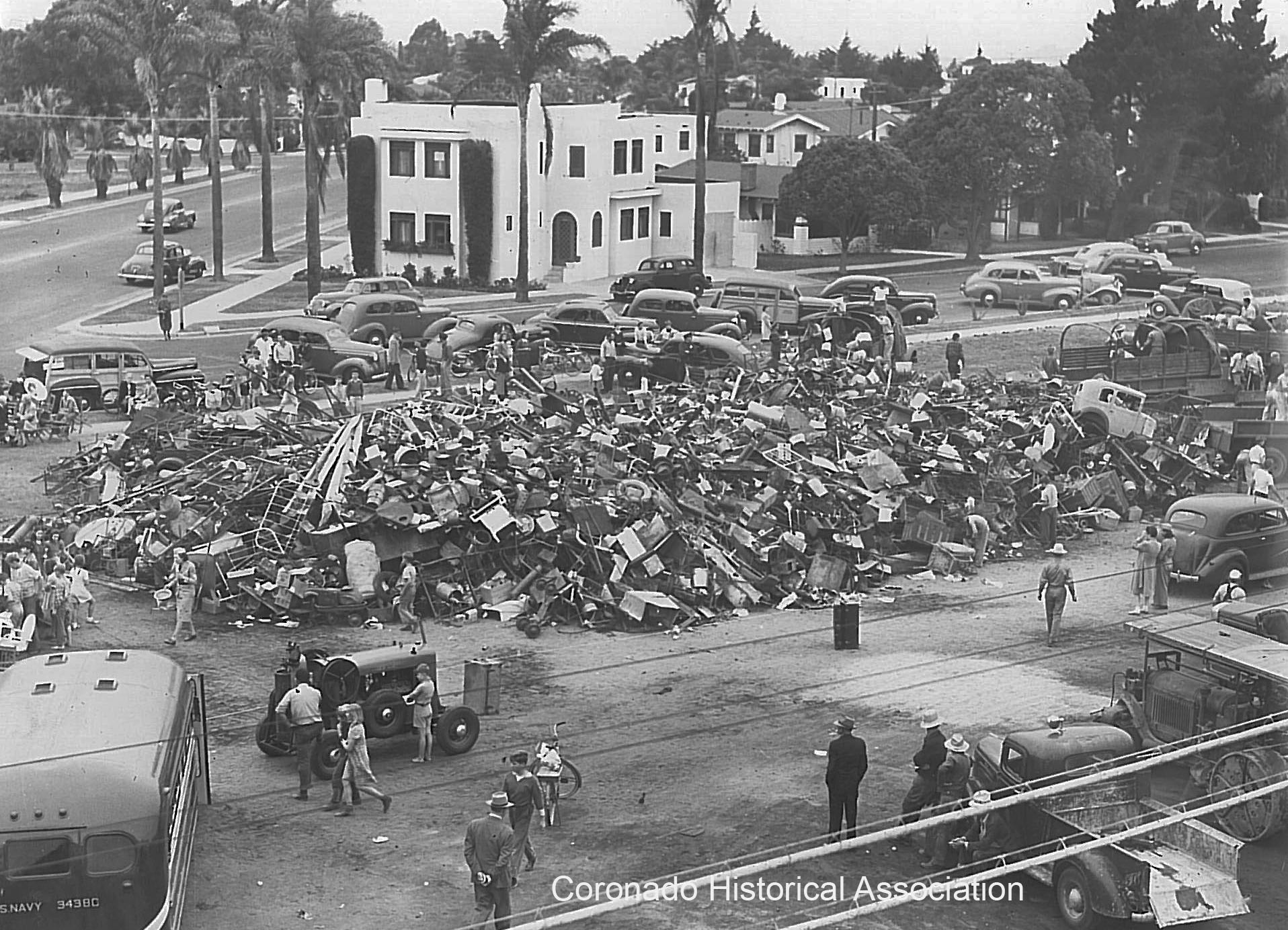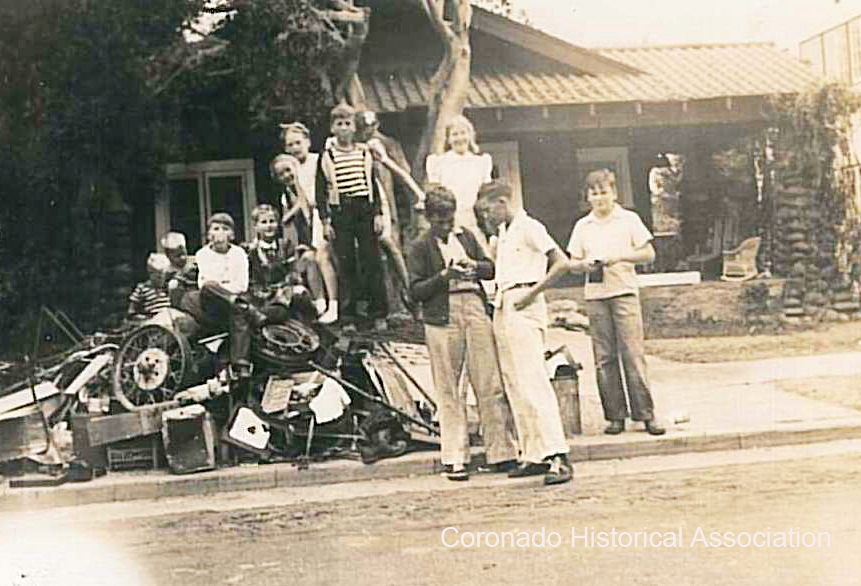 Another in a regular series of fascinating, intriguing, or thoughtful tales about people and places in Nado history — presented by your Coronado Historical Association
Another in a regular series of fascinating, intriguing, or thoughtful tales about people and places in Nado history — presented by your Coronado Historical Association
Daily life in Coronado changed dramatically during the years of World War II. Not only had many new families arrived in town and many husbands and fathers had deployed overseas, but those who remained on the island became involved in an active spectrum of war relief activities. Civilian Defense preparations, War Bond drives, bandage-rolling clubs, Red Cross meetings, rationing annoyances, and blackout drills all found their way into the daily lives of those in town.
One of the most enduring tales from this period was of Coronado’s efforts to collect salvage items and donate scrap, rubber, rags, and waste cooking fats for the war effort. Each donated item had a specific use. For instance, old rubber could be converted into tires for military vehicles and cooking fats could be made into glycerin and nitroglycerine for explosives.
Rather than considering items as “junk,” the War Production Board urged everyone, young and old, to seek out scrap in household trash. Today, this has a name recycling; in the 1940’s this amounted to a jarring new way of thinking. The War Salvage Committee of Coronado first saw success with a drive to collect rubber during July 1942 a breakthrough effort that gathered a stunning 41,094 pounds of rubber from Coronado residents and businesses.
Just three months later, Coronado organized another drive that was so effective that it received statewide recognition. This time the War Salvage Committee asked specifically for scrap metal that could be converted into tanks, guns, ships, and munitions. October 8, 1942 was designated as a “scrap salvage day” across all of Coronado.
From all accounts, the city was transfixed with the event. Schools closed, businesses closed all attention, everywhere, focused on an all-encompassing quest for scrap. The city hall offered up signs and metal fencing, school children dug through vacant lots, homeowners crawled through attics, businesses sorted through storage, and the Hotel Del surrendered old signage.

From the four corners of the island, cars, trucks, tractors, military vehicles, wheelbarrows, bicycles, and wagons all converged on an open lot at D Avenue and Palm (behind today’s Fire Department) to deposit their loads of suddenly-valuable scrap. Those who could not bring scrap themselves piled materials along every curbside where they could be picked up by volunteers and navymen.
By late afternoon, a mountain of metal scrap had materialized at Palm and D. As the effort wound to a close, even a dilapidated old Ford found its way to the top of the heap and everyone in town came down to the collection site for refreshments and hot dogs provided by the city.
Not only was this event a celebration of Coronado’s patriotism, but the estimated 500,000 pounds of salvaged metal was soon headed for processing and conversion into many armaments vitally needed on the front lines. (BL)
Candace Millar contributed to this article. Photos courtesy of Coronado Historical Association. www.coronadohistory.org




